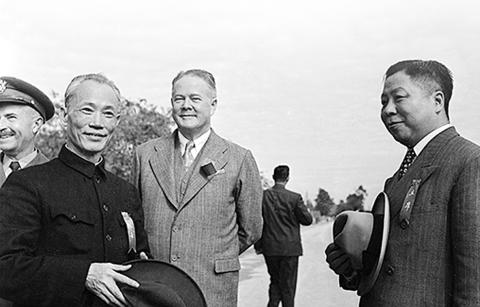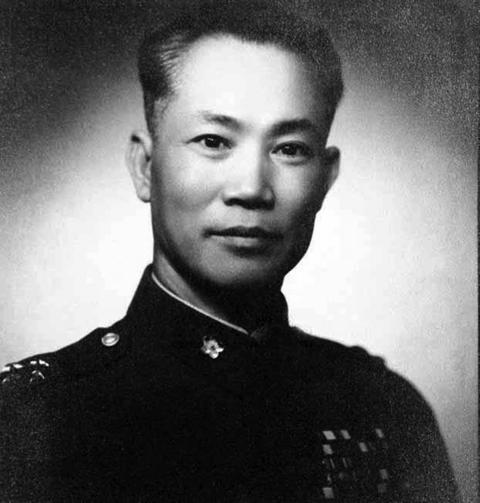Taiwan in Time: Jan. 2 to Jan. 8
It was a total surprise for Chen Cheng (陳誠) when he received a telegram from Chinese Nationalist Party (KMT) leader Chiang Kai-shek (蔣介石) on Dec. 28, 1948, informing him that he was to become Taiwan Provincial Governor as soon as possible.
Chen had been in Taiwan for nearly three months by then, albeit for the purpose of recuperating from stomach surgery after resigning his many military posts, which included First Chief of the General Staff of the Republic of China Armed Forces. On Nov. 12, Chiang sent him a telegram, telling him to focus on his health and not worry about the deteriorating situation in China.

Photo courtesy of Wikimedia Commons
Chen, who was a military man and not a politician, wrote in his memoir that Chiang never asked for his opinion and had not issued a formal order. Chen preferred that Wei Dao-ming (魏道明) keep the position, but Chiang sent him several telegrams, the last one on Jan. 3, 1949 stating “Why have you not assumed your position yet? If you continue to delay, it will only bring trouble and our overall plan will fail.”
Chen had no choice but to report to his post on Jan. 5.
It was a momentous task, as Chen not only had to govern Taiwan and keep it stable as a future base for the KMT to reclaim China, he also had to deal with the massive influx of people from China as well as handle and help set up the governmental and military institutions that were relocating to Taiwan. Furthermore, he acknowledged that the Taiwanese people distrusted the government due to the events of the 228 Incident in 1947.

Photo courtesy of Wikimedia Commons
In a collection of correspondence between Chen and Chiang, it appears that Chen tried to resign several times, citing health issues and his inability to handle the task. But all his requests were denied.
Despite his reluctance, Chen was quite productive during his one year as governor.
To appeal to the peasants in part to prevent them from turning to communism, Chen issued the “375 rent reduction” plan where tenant farmers were not to pay more than 37.5 percent of their annual harvest to their landlords. Prior to that, they often had to pay more than half.
Ou Su-ying (歐素英) writes in The Taiwan Provincial Assembly and the Republic of China’s Relocation to Taiwan (台灣省議會與中華民國政府遷台) that “this drew the ire of the Taiwanese elite, but they were powerless in face of Chen, who controlled both the government and the military.” However, this made him popular among farmers and did help stabilize agricultural society, she adds.
Chen also made extensive currency reforms to tackle the massive inflation of the Taiwan Dollar, issuing the New Taiwan Dollar which is still used today. Finally, in August 1949 he started drafting plans for local self-government, which was implemented at the end of 1950 where people were allowed to elect county and city officials.
Probably the most significant action he took was his declaration of martial law on May 19, 1949, which would remain in place for the next 38 years. This was initially done for weeding out Communists among the massive influx of people from China after the fall of Nanjing, and likely the April 6 student protests against police brutality. However, more restrictive measures would be added, including the Punishment of Rebellion Act (懲治叛亂條例), which originally targeted Communists but was soon used as a means to control and oppress the entire population as the White Terror era came into full swing.
In March 1950, Chen was “forced” into another position as Chiang asked him to succeed Yen Hsi-shan (閻錫山)as premier.
“It’s not that we didn’t have people who could do the job, it’s that nobody wanted to do it, and Chiang eventually sought me out. I did not think I was qualified, but Chiang insisted. We spoke directly and indirectly about this for at least nine times, and in the end he basically ordered me to do it.”
Correspondence shows that he tried to resign several times during his first year on the job, apparently to no avail.
And thus, Chen’s political career continued, whether he was willing or not — even eventually making it to Chiang’s vice president, which he served continuously from 1954 until he finally succumbed to illness in 1965.
Taiwan in Time, a column about Taiwan’s history that is published every Sunday, spotlights important or interesting events around the nation that have anniversaries this week.

This month the government ordered a one-year block of Xiaohongshu (小紅書) or Rednote, a Chinese social media platform with more than 3 million users in Taiwan. The government pointed to widespread fraud activity on the platform, along with cybersecurity failures. Officials said that they had reached out to the company and asked it to change. However, they received no response. The pro-China parties, the Chinese Nationalist Party (KMT) and Taiwan People’s Party (TPP), immediately swung into action, denouncing the ban as an attack on free speech. This “free speech” claim was then echoed by the People’s Republic of China (PRC),

Exceptions to the rule are sometimes revealing. For a brief few years, there was an emerging ideological split between the Democratic Progressive Party (DPP) and Chinese Nationalist Party (KMT) that appeared to be pushing the DPP in a direction that would be considered more liberal, and the KMT more conservative. In the previous column, “The KMT-DPP’s bureaucrat-led developmental state” (Dec. 11, page 12), we examined how Taiwan’s democratic system developed, and how both the two main parties largely accepted a similar consensus on how Taiwan should be run domestically and did not split along the left-right lines more familiar in

As I finally slid into the warm embrace of the hot, clifftop pool, it was a serene moment of reflection. The sound of the river reflected off the cave walls, the white of our camping lights reflected off the dark, shimmering surface of the water, and I reflected on how fortunate I was to be here. After all, the beautiful walk through narrow canyons that had brought us here had been inaccessible for five years — and will be again soon. The day had started at the Huisun Forest Area (惠蓀林場), at the end of Nantou County Route 80, north and east

Specialty sandwiches loaded with the contents of an entire charcuterie board, overflowing with sauces, creams and all manner of creative add-ons, is perhaps one of the biggest global food trends of this year. From London to New York, lines form down the block for mortadella, burrata, pistachio and more stuffed between slices of fresh sourdough, rye or focaccia. To try the trend in Taipei, Munchies Mafia is for sure the spot — could this be the best sandwich in town? Carlos from Spain and Sergio from Mexico opened this spot just seven months ago. The two met working in the